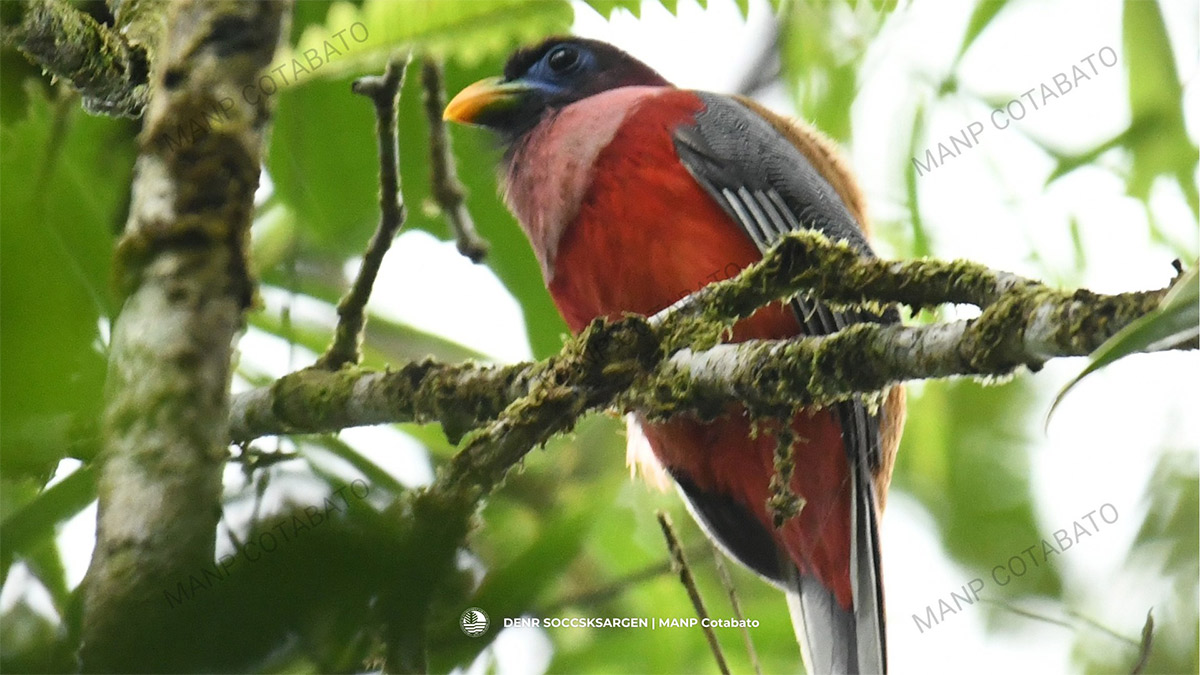‘Ibong Adarna,’ 2 squirrel species sighted on Mt. Apo

RARE SIGHTING This Philippine trogon, called “arak” by the Obo-Manobo tribe and associated with the mythical healing bird “Ibong Adarna,” is one of four bird species sighted on Mt. Apo in April. PHOTO COURTESY OF THE DEPARTMENT OF ENVIRONMENT AND NATURAL RESOURCES-12
KIDAPAWAN CITY, COTABATO, Philippines — Environment officials in the Soccsksargen region have documented endemic wildlife such as squirrels and birds, one of which has been likened to the mythical “Ibong Adarna,” in the forest of Mt. Apo, the country’s highest peak.
Two species of squirrels — the Philippine pygmy squirrel (Exilisciurus concinnus) and the Mindanao tree squirrel (Sundasciurus mindanensis) — and four Philippine trogon (Harpactes ardens), a species associated with the magical healing bird, were documented in the Mt. Apo Natural Park (MANP) during the Biodiversity Monitoring System (BMS) on April 29, according to lawyer Felix Alicer, regional executive director of the Department of Environment and Natural Resources in Soccsksargen (South Cotabato, Cotabato, Sultan Kudarat, Sarangani and General Santos).
Alicer said the forest ecosystems of MANP had appropriate habitats and active ecological processes that allow these wildlife species to thrive.
READ: Endangered Philippine long-tailed macaque sighted in Mt. Apo boulder face
The existence of squirrels indicated that the natural park could still sustain a variety of wildlife populations even as he pointed to useful conservation management practices in the area, he added.
Article continues after this advertisementMt. Apo, rising 2,954 meters (9,692 feet) above sea level, is the highest mountain in the country located along the borders of Davao City and the provinces of Davao del Sur and Cotabato.
Article continues after this advertisementRevered
The Philippine trogon, called “arak” by the Obo-Manobo people of Mt. Apo, sighted and documented during the BMS is the sole species of trogon endemic to the Philippines, said Alicer.
The MANP’s Protected Area Management Board noted that both of these endemic species have been listed as least concerned species by the International Union for Conservation of Nature.
Despite this classification, however, these birds hold immense cultural and ecological significance within the MANP and throughout the region, Alicer said.
The Obo-Manobo people, considered custodians of Mt. Apo’s ancestral lands, have long revered the bird species as a symbol of their connection to the environment.
Alicer said that the presence of Philippine trogon on Mt. Apo is an indicator of overall ecosystem good health.
“Wildlife plays major roles in the biodiversity of ecosystems because it is essential for maintaining ecological balance,” Alicer said.
“Birds and squirrels on Mt. Apo play various roles in the food chain and help regulate populations of other organisms,” he added.